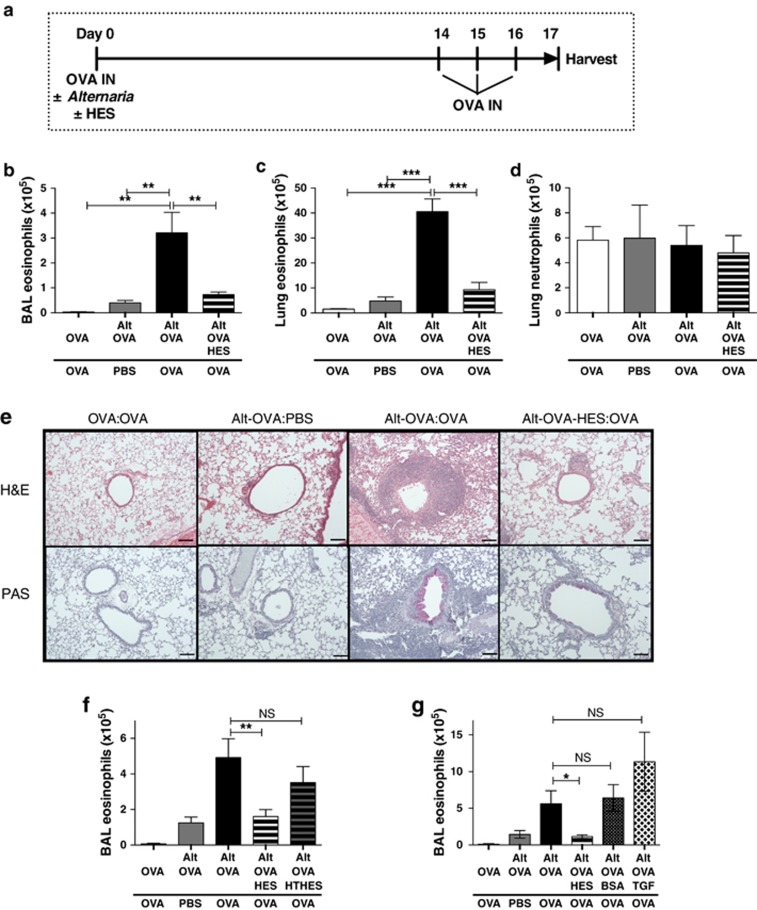Figure 1.
Alternaria-induced allergic inflammation to ovalbumin (OVA) challenge is suppressed by H. polygyrus excretory-secretory (HES) products. (a) Schematic of the Alternaria model: OVA protein (20 μg) was administered to BALB/c mice intranasally, with or without 50 μg Alternaria extract and 10 μg HES. Two weeks later, mice were challenged by intranasal (IN) administration of 20 μg OVA or phosphate-buffered saline (PBS) for 3 days, and samples taken at day 17. (b) Numbers of SiglecF+CD11c– eosinophils in bronchoalveolar lavage (BAL) fluid determined by flow cytometry. (c, d) Lung cell suspensions were analyzed by flow cytometry for eosinophils (as in panel b) and neutrophils (GR1hiCD11bhiSiglecf−CD11c−). (e) Formalin-fixed lungs were sectioned and stained by Hemotoxylin and Eosin (H&E) or Periodic Acid Schiff (PAS). Representative sections are presented, scale bar=100 μm. (f) HES was heat treated at 95 °C for 20 min (HT-HES) before administration, and numbers of BAL SiglecF+CD11c– eosinophils counted. (g) BAL eosinophils from mice treated with Alternaria, OVA, and HES as described in panel a, or with 4 ng rTGF-β (TGF), or 10 μg Bovine Serum Albumin (BSA) as indicated. Data in panels b–d are representative of five repeat experiments, 3–5 per mice group, in panel f are pooled from two repeat experiments, total n=7 per group, and in panel g are representative of two repeat experiments with four mice per group. ***P<0.001, **P<0.01, *P<0.05, and NS, not significant.

